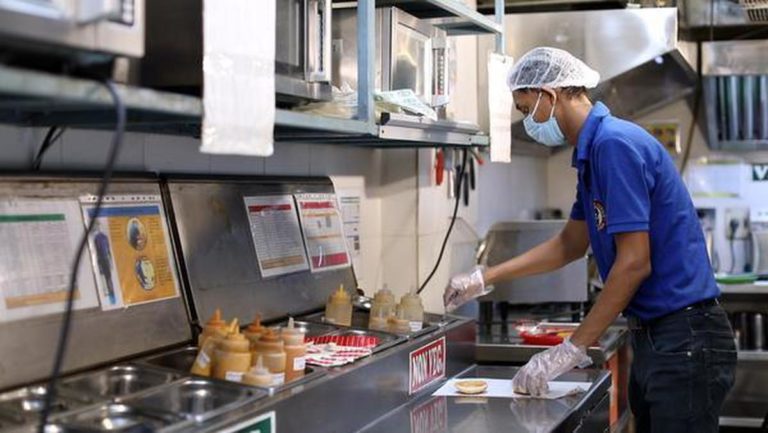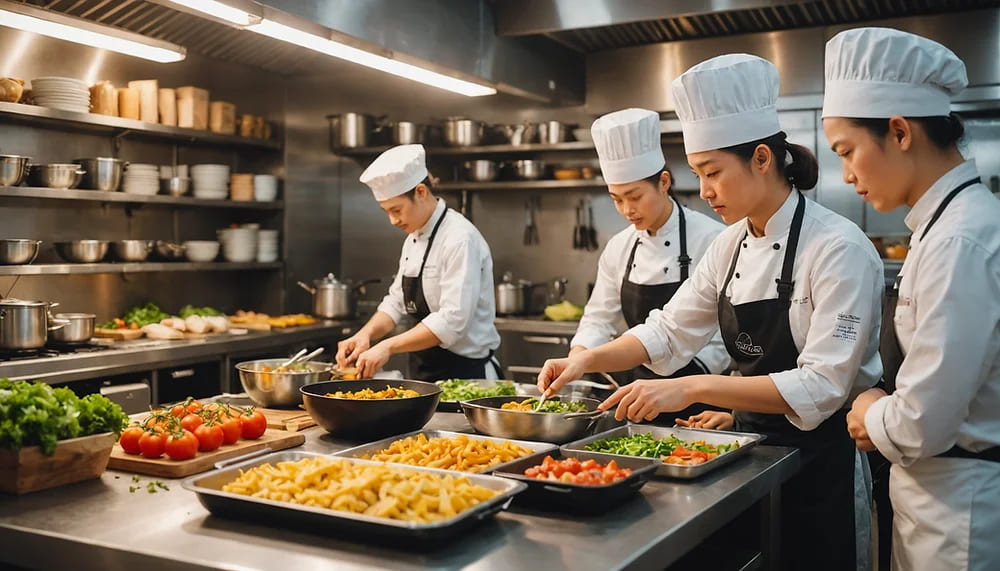- General
- Updated on August 21, 2025
Street Food vs. Cloud Kitchens: How India Eats in the Digital Age

India’s food culture is as diverse as its people. From spicy chaats on bustling street corners to gourmet meals delivered via apps, the way Indians eat has transformed dramatically in recent years. While street food has long been the heart and soul of Indian cuisine, the rise of cloud kitchens is reshaping eating habits, especially in urban areas. Understanding the differences, benefits, and future of both reveals a lot about how India’s food ecosystem is evolving.
The Legacy of Indian Street Food
For decades, Indian street food has been more than just a quick bite—it is a cultural experience. Cities like Delhi, Mumbai, Kolkata, and Lucknow are famous for their iconic dishes served on busy streets. From pani puri and pav bhaji to momos and kebabs, these foods are loved by millions for their taste, affordability, and local authenticity.
Street food thrives on vibrancy. It creates social experiences, bringing people together across classes and communities. Eating chaat with friends at a roadside stall or grabbing vada pav before a train journey is as much about nostalgia and connection as it is about satisfying hunger.
Why Street Food Remains Popular
- Affordability: Most street food is budget-friendly, making it accessible to students, workers, and families.
- Authentic Flavours: Recipes often stay true to local traditions, passed down through generations.
- Convenience: Street food stalls are usually located in high-footfall areas, perfect for quick meals.
- Cultural Identity: Many Indian cities are known for specific street foods, giving them culinary fame.
Despite its charm, concerns over hygiene and food safety have often raised questions about street food, especially in urban areas where health-conscious consumers are more cautious.
The Rise of Cloud Kitchens in India

Cloud kitchens, also known as ghost kitchens or virtual restaurants, are delivery-only food businesses operating without dine-in spaces. They have gained immense popularity in India, fueled by the boom of food delivery apps like Swiggy and Zomato.
Cloud kitchens allow entrepreneurs to run multiple food brands from a single kitchen, lowering overhead costs while maximizing reach. This model became even more significant during the pandemic, when eating out was restricted, and home delivery became the default dining option.
Why Cloud Kitchens Are Booming
- Lower Operational Costs: No investment in prime real estate or large staff for dine-in service.
- Wide Menu Choices: One kitchen can serve multiple cuisines under different brand names.
- Tech Integration: AI-driven menus, app-based ordering, and customer analytics enhance operations.
- Health and Hygiene: Consumers often trust cloud kitchens more for maintaining food safety standards.
According to industry reports, India’s cloud kitchen market is projected to grow exponentially, attracting investments from both startups and established food brands.
Street Food vs. Cloud Kitchens: Key Differences
While both street food and cloud kitchens serve the same purpose—feeding India—they operate in entirely different ways.
Cost and Accessibility
Street food remains the most affordable and accessible option for millions. In contrast, cloud kitchens cater more to middle- and upper-class consumers who value convenience, hygiene, and tech-enabled delivery over price.
Experience vs. Convenience
Street food offers a sensory experience—smells, sounds, and the joy of eating on the go. Cloud kitchens, however, prioritize convenience, letting customers enjoy restaurant-style meals without stepping out.
Trust and Hygiene
Hygiene is a long-debated issue in street food culture. While many vendors maintain excellent cleanliness, others fall short, raising concerns. Cloud kitchens, on the other hand, often highlight hygiene and safety in their marketing, appealing to the health-conscious urban crowd.
Scale and Innovation
Street food vendors usually serve limited menus rooted in tradition. Cloud kitchens, backed by technology, can experiment with fusion cuisines, seasonal menus, and AI-driven customer personalization.
Consumer Choices: Tradition Meets Technology
Interestingly, India’s food culture today reflects a balance between these two models. Young professionals in metro cities may order from cloud kitchens during workdays but still enjoy street food on weekends. Families might rely on delivery apps for convenience while cherishing street food during festivals or local outings.
How Millennials and Gen Z Eat
- Street Food for Socializing: Younger generations often see street food as part of the city’s lifestyle.
- Cloud Kitchens for Daily Convenience: Busy schedules and long commutes make delivery meals a go-to option.
- Digital Influence: Food influencers on Instagram and YouTube promote both street food gems and cloud kitchen startups, shaping consumer preferences.
The Future of Eating in India
As India continues to urbanize, cloud kitchens will likely expand further, supported by digital platforms and investor interest. However, street food will never lose its charm—it is deeply tied to India’s identity and tourism appeal.
What’s more, hybrid models are emerging. Some street food vendors are registering on food delivery platforms to reach a wider audience, while cloud kitchens experiment with creating authentic “street-style” menus. This merging of tradition and innovation could define the future of India’s food industry.
Read Also : Zero-Waste Kitchen Swaps: Eco-Friendly Alternatives to Everyday Indian Cooking Essentials
Final Thoughts
India’s food story is a tale of contrasts. Street food represents tradition, community, and affordable indulgence, while cloud kitchens embody modern convenience, hygiene, and digital efficiency. Instead of competing, both coexist to cater to the diverse needs of Indian consumers.
As India eats in the digital age, it’s clear that the nation’s palate embraces both the spicy tang of golgappa at a roadside stall and the neatly packed biryani delivered at the doorstep. Together, street food and cloud kitchens reflect how India’s culinary culture is evolving—rooted in tradition yet open to innovation.
Join the discussion
Related Articles
No results available
ResetTrending Articles


- General
- Updated on December 16, 2025


- General
- Updated on December 15, 2025


- General
- Updated on December 11, 2025


- General
- Updated on December 11, 2025


- General
- Updated on December 11, 2025


- General
- Updated on December 2, 2025


- General
- Updated on December 5, 2025


- General
- Updated on November 27, 2025


- Health
- Updated on November 24, 2025


- General
- Updated on November 24, 2025
No results available
Reset


